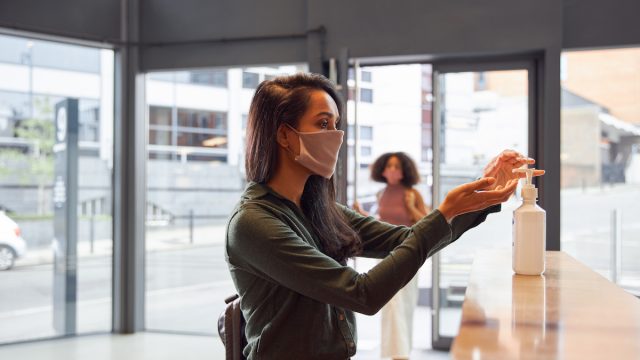Whether you want to race back to your office because your work from home setup has never worked for you, or if you never want to return to the office again, a lot of companies are calling employees back into the office. As you prepare for your transition back, there are some things you can ask before you return for your first day that will make going back less stressful, and help you understand what your world of work will now look like. Here are six things you might want to ask to prepare to return.
Do you have to go back?
If you’ve loved working from home, and really don’t want to go back to the office, you might find yourself asking if you really need to return to the office to get your job done. If you don’t want to go back, explain to your manager how he or she will benefit if you’re not required to come back to the office. But you should also keep in mind that essential workers “must report to work unless they are sick, have been exposed to the virus, or are normally covered by laws such as the Americans with Disabilities Act or Family Medical Leave Act,” according to usnews.com.
You might also be required to go back to work if you live in a state with at-will employment – unless you have an employment contract that specifically states you are protected from this requirement.
What are the capacity limits/ employee schedules?
Many companies calling employees back to the office are easing into routines that include staggered start and end times as recommended by the Centers for Disease Control to minimize potential exposure if an employee becomes sick. Your employer might also have performed an air quality study on the office space and are following expert recommendations on optimal capacity for worker health. Be sure to ask if your return to work will mean a full-time office schedule immediately, or if departments/ colleagues will be staggered. Also, you’ll want to understand if you can switch days to be in the office if a meeting requires it. Most employers will continue to encourage virtual meetings, so the virtual meeting option will always be included, but it’s better to understand the expectations for in-person vs. virtual meetings and how your access may be limited.
What safety measures are being taken?
There is an entire safety protocol that has been developed by the Centers for Disease Control for offices and employers re-opening that you can find here.
Ask your employer if these changes have been implemented:
- Are there limits to which entrances can be accessed? Are there certain hours for access?
- What is the mask policy?
- Will health screenings be performed (what are they, how often will they be performed)
- Are there limits to community breakrooms and other areas that might be considered “high touch?” – Meaning, if you relied on the office coffee to get your daily quota of caffeine, you might now be in a bring-your-own-coffee and mug situation. You also might not be able to put your lunch in the community fridge.
- Actual office layout (are cubicles still in place), and are there routed (one-way) traffic patterns within the office?
What do I do if I feel sick? What do I do if I think a co-worker is sick?
Your employer likely has a policy in place that will be sent to you before returning to the office. But the CDC recommends, “Employees who appear to have symptoms when they arrive at work or who become sick during the day should immediately be separated from others, provided a face mask if they are not using one, and sent home with instructions and guidance on how to follow-up with their healthcare provider.”
In terms of suspicions about a co-worker being sick, discuss your observations/ concerns with your manager before approaching the colleague directly.
What is the policy on meetings and in person gatherings?
You’ll want to understand your employer’s stance on how to gather if you need to, and when you need to wear a mask. Will there be capacity limits on conference rooms or common gathering areas?
“The only places you should be unmasked indoors are in your own personal office or partitioned cubicles at least 6 feet from others,” explains Christopher Ohl, MD, Professor of Medicine and infectious disease expert at Wake Forest Baptist Health in Winston-Salem on USAToday.com. “One area where I have seen workplace exposures occur is when eating lunch. Obviously, masks are not worn, making this event in many instances the highest risk for virus exposure in the workplace,” he says. “To decrease this risk, if you eat with others, do so in a large room and distanced from others, or outside.”
Will I be required to get a vaccination once it becomes available?
Because vaccines are not widely available yet, your employer might not have a policy determined around this question yet. But it’s possible. As The Wall Street Journal explains, “During a pandemic, employers can require vaccinations, the EEOC says. An employee may be entitled to an exemption if the vaccine would interfere with a medical condition or violate that person’s religious beliefs.”
If and when we return to the office the world of work will look and feel a little different. However, understanding the changes that have been made in your office environment before you experience them can help the transition feel safer and cause you less anxiety.

